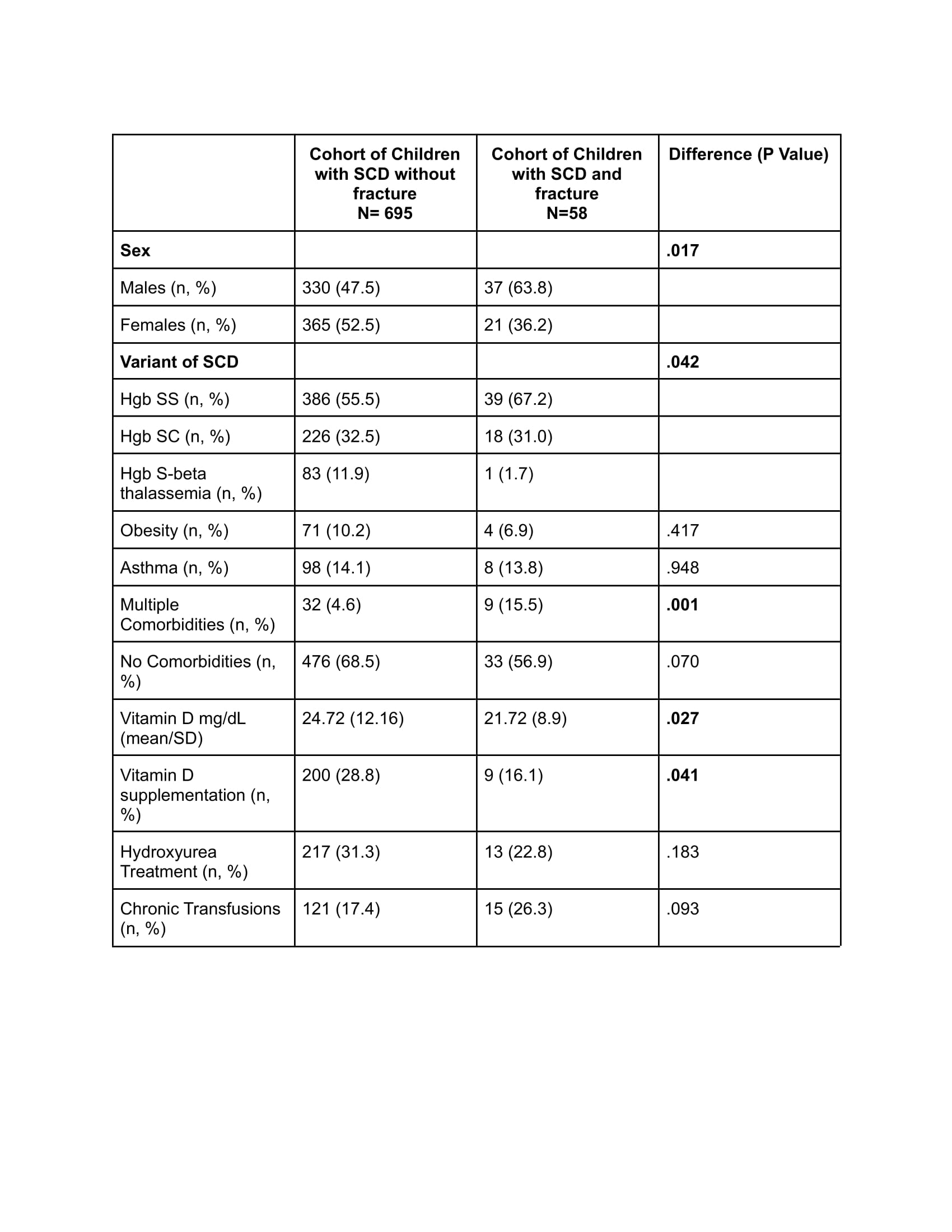Emergency Medicine: All Areas
Emergency Medicine 15
393 - Fractures With and Without Sickle Cell Disease: Is There Really a Difference in Rates, Types and Outcomes?
Publication Number: 393.406

Lilian E. Awad, DO
Pediatric Emergency Medicine Fellow
Children's Hospital of Michigan
Troy, Michigan, United States
Presenting Author(s)
Background: Individuals with sickle cell disease (SCD) are restricted from certain physical activities due to the increased risk of complications including fractures secondary to osteopenia. However the exact incidence and outcomes of fractures amongst these patients is unknown.
Objective: Our objectives were to (1) describe the incidence, epidemiology, and outcomes of fractures in patients with SCD and (2) to compare fracture patterns and outcomes in patients with and without SCD.
Design/Methods:
This is a retrospective, cohort study of patients aged 0-25 years old with HbSS, HbSC, or HbS-β-thalassemia with a fracture evaluated at a tertiary care pediatric emergency department (PED) from April 2009-April 2022. Eligible patients were identified using a combination of ICD billing codes and a preexisting hematology clinic database. Patients were age and gender matched with non-SCD patients with fractures during the study period. Data on demographics, number and types of fractures and outcomes were collected.
Results: 753 patients with SCD [58 with fracture (7.7%)] were identified during the study period. While age and race distribution were similar between the two groups, there were differences in sex (p=0.017), ethnicity (p=0.028) and type of sickle cell (p=0.042). SCD patients with fractures were more likely to have multiple comorbidities (15.5% vs 4.6%, p< 0.001), lower mean vitamin D levels (21.7 vs 24.7 mg/dL, p=0.027) and were less likely to be on vitamin D supplementation (16% vs 28.8%, p=0.041) compared to those without fractures. There were no differences in treatment with hydroxyurea or chronic transfusions. The most common etiology was fall (51.7%) and carpal bones (23%) were most commonly fractured. Logistic regression revealed factors associated with fractures in SCD included male gender (OR: 1.8; 95% CI: 1.02-3.2), presence of multiple comorbidities (OR: 3.600, 95% CI: 1.5-8.6) and lack of vitamin D supplementation (OR: 0.417, 95% CI: 0.222-0.999). There were no differences in etiology or type of fracture between SCD and non-SCD (n=174) patients. Non-SCD patients with fractures were more likely to be obese (19.5% vs. 6.9%, p=0.024) and require surgical repair compared to their peers with SCD (16.2% vs 3.4%, p=0.013).
Conclusion(s): The incidence of fractures among SCD patients is low. Male gender, lack of vitamin D supplementation and presence of multiple comorbidities are associated with increased risk of fracture in these patients. SCD patients with a fracture were less likely to require surgical treatment compared to their non-SCD counterparts.
.jpg)
.jpg)
